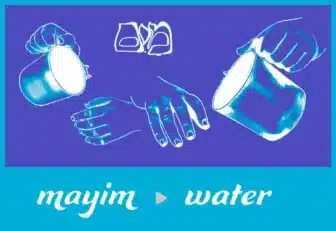By Shuli Karkowsky, Moving Traditions CEO
I love how the calendar of Jewish holidays lends structure to my year. Passover epitomizes this more than any other holiday – replete with strong childhood memories; ritual before, during and after the holiday to amplify its meaning; and a central custom – the seder – that itself means “order” and provides even more structure to one of our most ritualized holidays.
By engaging in the same rituals year after year, our mind often closes in on what is different this particular year: Perhaps a new birth has brought an adorable new face to the table; a newly empty seat provides a moment to mourn or share a memory; a new generation is ready to take on the mantle of hosting the seder in new ways.
The seder, year to year, is exactly the same and yet, always slightly different. Both the sameness and the newness each year are what make it so very powerful.
This tension is the central premise of Moving Traditions’ work. With your support, Moving Traditions provides thousands of youth with programs deeply rooted in the honored and sacred tradition of that which came before us, while also inspiring young people to help the tradition evolve so that it becomes their own. We “move traditions” so that ancient Jewish wisdom can be made relevant for today’s teens.

As you prepare for your own seder – hopefully one that honors tradition while updating it to serve your values and spiritual needs – I am delighted to share a resource, Urchatz: A Deeper Dive into Handwashing, from my brilliant colleagues that brings more meaning to a seemingly mundane ritual.
This beautiful piece on handwashing reminds me of my favorite Hasidic parable about water:
A young prince is sent down to the river by his father, the king, with a barrel. He fills the barrel with water, but every time he makes the long and arduous journey back to the castle, the water leaks out. He tries walking more quickly, plugging the holes with mud, angling the barrel differently — every tip and trick he can imagine. But it is all for naught – the water keeps emptying. After hours and hours, he returns to his father the king, and admits, “Father, I have failed. I couldn’t fill the barrel.” The king looks at his son with kind eyes and a jovial smile: “Fill the barrel?! I wanted you to rinse it out!”
The king in this parable understands the most important thing we can teach our children is not just facts or things that can be retained. It is how knowledge trickles through them, changing who they are as people and how they interact with the world.
For many years, we have worried about retention of Jewish tradition, about what knowledge our children and students can memorize and hold in their barrels. This Passover, Moving Traditions hopes to ask our participants the same questions as the king in the story: How can what you learn about Jewish tradition wash through you, and change the way you interact with the world and understand it?
I hope this resource will help you take a moment to think about how you might be changed by your Passover seder, and how you in turn might keep changing the world around you long after you put down your Haggadah.
Happy Passover!
